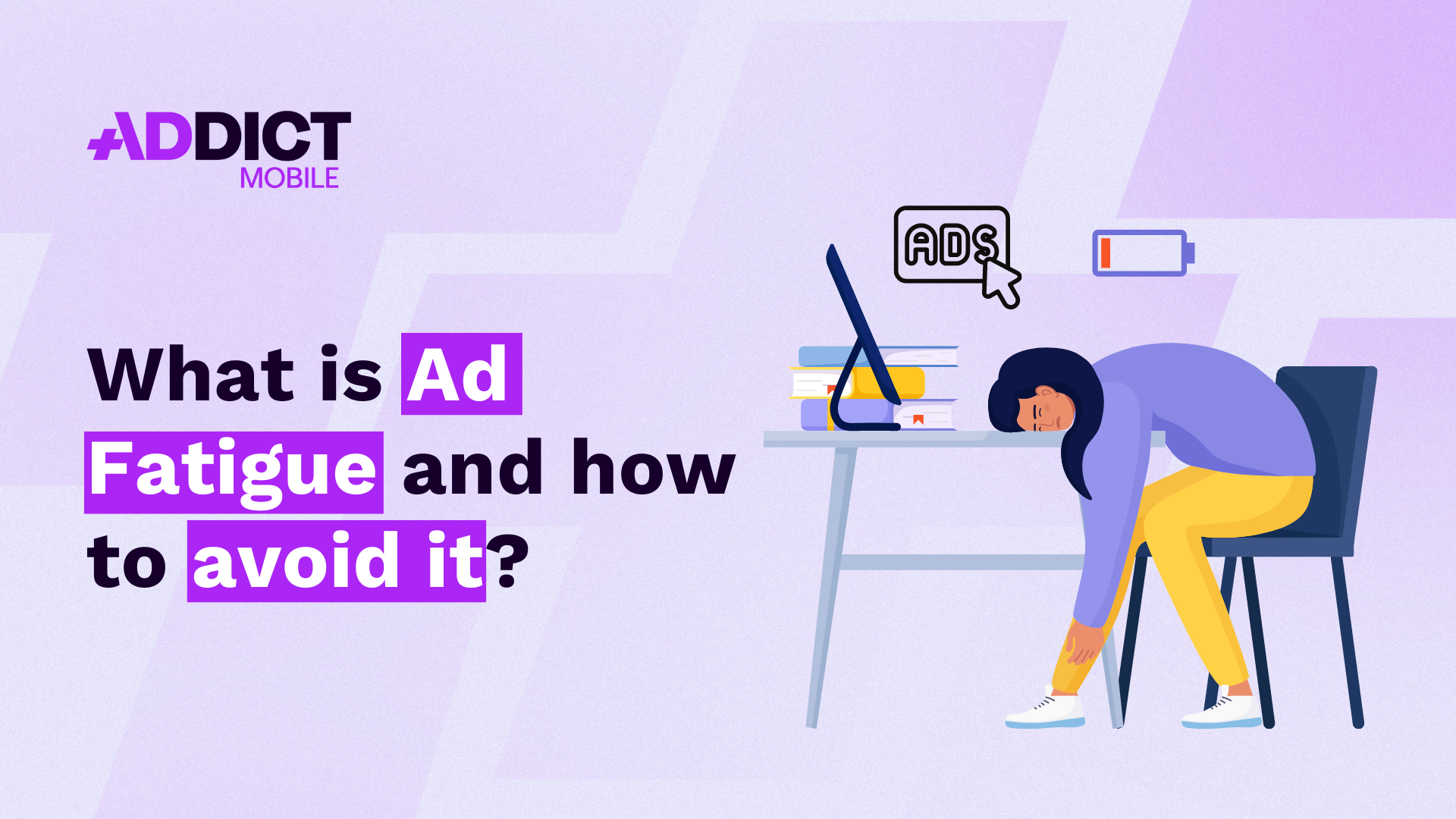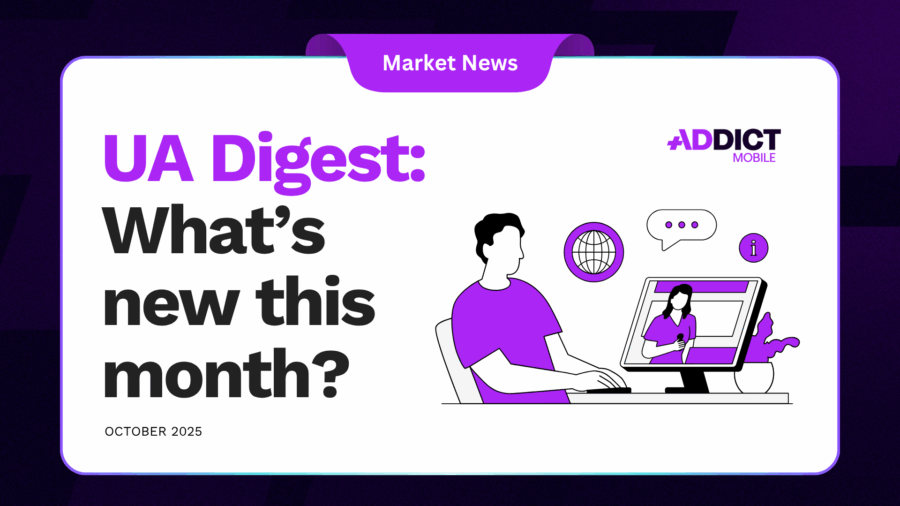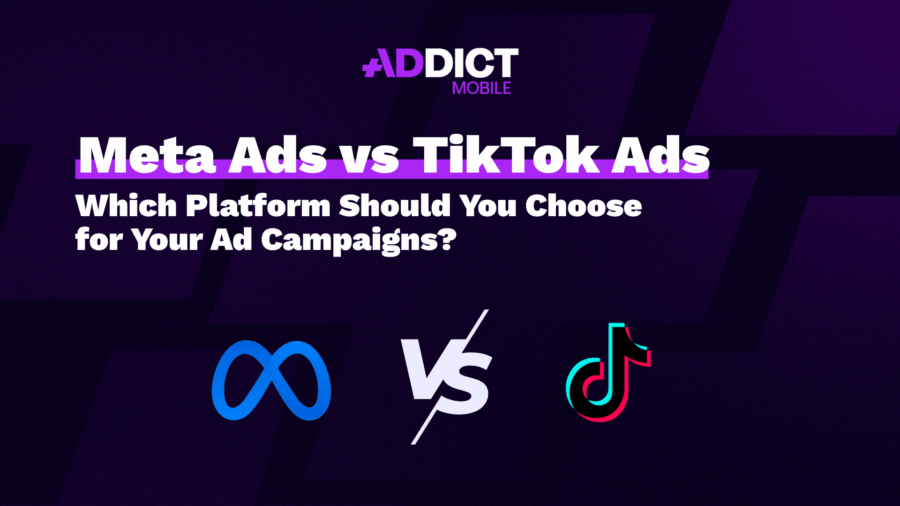What is Ad Fatigue and how to avoid it?

La creative fatigue, ou Ad Fatigue, désigne la baisse de performance d’une publicité lorsque les utilisateurs l’ont vue trop souvent. Cette surexposition visuelle génère une forme de lassitude, aussi appelée fatigue créative.
Ce phénomène impacte directement les performances d’une campagne publicitaire, en particulier en paid ads. Il peut entraîner une hausse importante du coût d’acquisition.
Pour assurer une performance durable, il faut anticiper l’Ad Fatigue dès la phase de lancement. La gestion du cycle créatif doit être pensée dès la mise en place de la campagne.
Qu’est-ce qui favorise l’Ad Fatigue ?
L’Ad Fatigue ne s’explique pas par un seul facteur. Elle résulte d’un ensemble de paramètres : diffusion, création, et absence de stratégie de renouvellement. Trois éléments clés y contribuent particulièrement.
Une taille d’audience restreinte
Diffuser vos ad campaigns sur une target audience réduite entraîne une fréquence d’exposition plus rapide. En d’autres termes, vos publicités seront vues par les mêmes utilisateurs à plusieurs reprises en peu de temps. Cette surexposition réduit leur efficacité, les utilisateurs développant une forme de lassitude vis-à-vis de la publicité.
Deux paramètres principaux déterminent cette répétition : le budget et la taille de l’audience.
- Si le budget est élevé et l’audience restreinte, la fréquence sera rapidement trop élevée.
- Si le budget est modéré et l’audience large, la diffusion sera plus étalée et l’Ad Fatigue plus tardive.
Par exemple, sur une campagne à 100 € par jour, une créa unique exposée à une audience restreinte risque de générer une fréquence de 4 ou 5 en quelques jours. Sur une audience plus large, cette même créa pourrait rester performante plus longtemps.
Un nombre de créas limité
La répétition n’est pas seulement une question d’audience, mais aussi de volume créatif disponible. Si vous disposez de peu de visuels, ils seront tous exposés plus fréquemment.
Prenons l’exemple de deux annonceurs, A et B, qui diffusent leurs campagnes en simultané avec le même budget quotidien. Leurs coûts par mille impressions (CPM) sont donc identiques, et le volume total d’impressions est équivalent. La seule différence réside dans le nombre de créas utilisées :

- L’annonceur A utilise 3 créas
- L’annonceur B en utilise 6
Résultat : chaque créa de l’annonceur A reçoit deux fois plus d’impressions que celles de l’annonceur B. Elle atteindra donc le seuil de saturation beaucoup plus rapidement.
Cette logique simple souligne l’importance d’avoir un stock de visuels suffisant, et surtout varié, pour limiter les effets de lassitude.
Une faible diversité des concepts créatifs
Changer uniquement les couleurs, la musique ou le texte d’un visuel ne suffit pas à éviter la fatigue créative. Utiliser le même concept ou le même angle créatif, même en le variant légèrement, accentue la sensation de répétition. L’utilisateur perçoit vite cette similarité, ce qui accélère l’Ad Fatigue.
Il est donc essentiel de penser en termes de diversité créative dès la phase de brief. Alternez les messages, les formats, les tonalités, les styles graphiques et autres. Le renouvellement passe aussi par l’introduction de nouvelles idées, pas seulement par la déclinaison des concepts existants.
L’Ad Fatigue est un cycle
Le graphique suivant illustre le cycle de vie d’une créa du lancement à l’Ad Fatigue :

L’a fatigue publicitaire’ad fatigue n’est pas un phénomène ponctuel. Elle s’inscrit dans un processus cyclique, naturel dans la vie d’une publicité diffusée sur une ad platform. Il est important de comprendre les différentes étapes de ce cycle pour mieux le maîtriser.
Phase 1 : Lancement et apprentissage
La créa est ajoutée aux campagnes. Une phase d’apprentissage se déclenche. L’algorithme de la plateforme (Meta, TikTok, Snapchat…) commence à diffuser le visuel pour obtenir un premier volume d’impressions. Il analyse alors les premiers signaux de performance : interactions, vues, clics ou installations.
Durant cette phase, la publicité est testée auprès de différents profils pour déterminer si elle répond aux critères de performance attendus.
Phase 2 : Mise en compétition
Une fois validée, la créa entre en compétition avec les autres visuels actifs. C’est à ce moment qu’on peut véritablement mesurer son efficacité :
- Génère-t-elle un taux d’installation suffisant ?
- Atteint-elle les objectifs en termes de CPA, ROI ou coût par ajout au panier ?
- Se positionne-t-elle dans le top des performances visuelles ?
Si les résultats sont prometteurs, les volumes sont augmentés pour exploiter son potentiel. Si ce n’est pas le cas, la créa est rapidement coupée.
Phase 3 : Scaling et amplification
Lorsque les résultats sont bons, l’investissement sur cette créa augmente. La diffusion est élargie et le nombre d’impressions croît rapidement. C’est à cette phase que les signaux de fatigue peuvent commencer à apparaître.
Phase 4 : Déclin progressif
Au fur et à mesure de sa diffusion, la créa devient de moins en moins engageante. Le CTR (click-through rate) commence à diminuer, ce qui fait mécaniquement monter le CPI. Ce déclin s’explique par une surexposition : les utilisateurs, déjà familiers du visuel, ne réagissent plus.
Ce n’est pas parce que la publicité devient “mauvaise”, mais parce qu’elle a simplement atteint la fin de son cycle. Elle peut encore générer des résultats, notamment des actions in-app, mais de façon moins rentable.
À noter : une baisse du CTR précède généralement la baisse de conversion. Le CPI est souvent le premier indicateur à réagir, suivi du CPA.
Comment éviter l’Ad Fatigue ?
La fatigue créative est inévitable. Mais elle peut être anticipée et limitée grâce à une bonne gestion des campagnes et du processus créatif. Voici quelques pratiques recommandées.
Tester régulièrement de nouvelles audiences
Changer d’audience permet de relancer la diffusion des visuels en touchant de nouveaux profils. Cela aide à identifier les signaux faibles d’essoufflement ou les performances différenciées selon les segments.
En combinant des ciblages comportementaux, lookalike, retargeting ou socio-démographiques, vous pourrez prolonger la durée de vie de vos meilleures créas.
Privilégier les ciblages larges
Une target audience large offre une plus grande capacité de reach. Plus la taille de l’audience est importante, plus la fréquence sera étalée dans le temps, et plus l’impact de la répétition sera atténué.
À budget équivalent, une campagne large permet donc de prolonger la phase de performance.
Rafraîchir les créas de manière continue
C’est le levier le plus direct pour agir sur l’ad fatigue. Il est crucial de renouveler régulièrement ses visuels et de prévoir des pauses régulières dans la diffusion de chaque créa.
Voici quelques conseils :
- Déclinez vos top concepts en plusieurs formats
- Alternez concepts narratifs, démonstratifs, UGC, humoristiques
- Préparez un planning de production créative avec des cycles courts (2 à 3 semaines)
- Identifiez des moments clés de rotation, comme les événements saisonniers ou les temps forts commerciaux

Le graphique ci-dessous montre l’évolution de l’IPM (installations par mille impressions) pour un client du secteur Fintech. Il met en évidence l’effet direct du renouvellement créatif sur les performances.
À chaque ajout de nouvelles créas, l’IPM remonte. Cela démontre qu’une gestion active du renouvellement contribue à maintenir un bon niveau de performance, même après plusieurs semaines de diffusion. La donnée créative devient ici un levier aussi stratégique que l’audience ou les enchères.
Conclusion
L’Ad Fatigue est un phénomène incontournable dans toute stratégie de campagne publicitaire en paid ads. Elle ne peut pas être éliminée, mais elle peut être anticipée, mesurée et maîtrisée.
La clé réside dans une approche structurée du processus créatif :
- Planifier des cycles courts de diffusion
- Varier les concepts dès la phase de brief
- Disposer d’un volume suffisant de visuels
- Surveiller les indicateurs clés comme la fréquence, le CTR, le CPI ou l’IPM
- Adapter les ciblages et segmentations au fil du temps
En adoptant cette démarche, vous transformez l’a fatigue créative’ad fatigue en un indicateur utile, aidant à identifier les moments de bascule dans vos campagnes. Vous gagnez en réactivité, en performance… et surtout, en rentabilité sur le long terme.
NEWS
Article in relation

Cheat Sheet #3: Everything You Need to Know…
Q5 is the post-holiday “bonus” period running from December 26 to mid-January, a unique opportunity for advertisers to keep momentum after the holiday...
Published on 5 November 2025
UA Digest #10 : What’s new this month?
Discover our User Acquisition Digest, your monthly update on the latest trends and news in mobile marketing and user acquisition! Meta Andromeda: the...
Published on 28 October 2025
Meta Ads vs TikTok Ads: Which Platform Should…
In 2025, social ads have become a must for capturing attention and driving performance. When it comes to two major players, Tiktok ads...
Published on 20 October 2025

